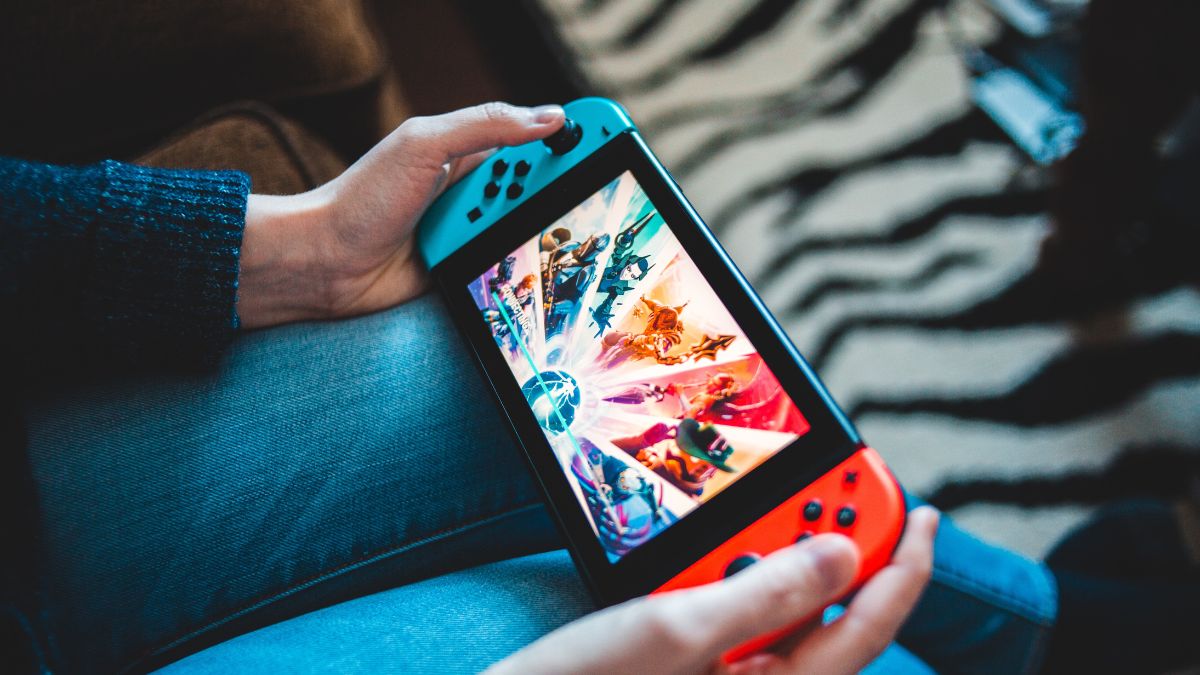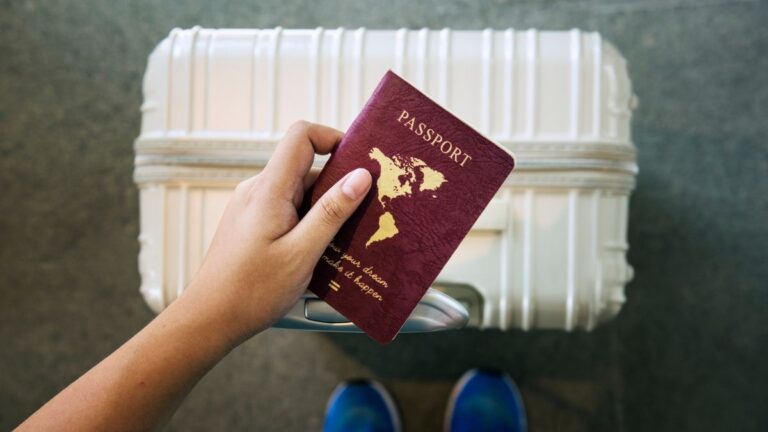Can You Bring A Nintendo Switch On A Plane

As participants in Amazon Associates and other programs, we earn from qualifying purchases. This comes at no additional cost to you. For more details, see our Affiliate Disclosure.
Are you planning to bring your Nintendo Switch on a plane? You might be wondering if it’s allowed and what you need to know before flying with your gaming device.
You can bring a Nintendo Switch on a plane. According to the TSA, you can take portable or handheld electronic devices like laptops, tablets, and Nintendo Switches on a plane. Devices larger than a cell phone must be scanned in a separate container for security.
In this article, we’ll go over everything you need to know about bringing your Nintendo Switch on a plane.
Understanding Airline Electronic Device Policies: Your Nintendo Switch and You
Navigating airline electronic device policies can be a daunting task, especially as they can vary from airline to airline. Fortunately, most airlines generally allow passengers to carry personal electronic devices, like your Nintendo Switch, on board. The rule of thumb is that handheld devices are typically permissible, as long as they’re used during non-critical phases of the flight – that is, not during take-off or landing.
It’s crucial to note that during these periods, your Nintendo Switch must be safely stored away in your carry-on luggage or seat pocket. When the seatbelt sign is off, and cruising altitude is reached, you’re usually free to continue your quest to save Princess Zelda or help Mario defeat Bowser. Keep in mind that Wi-Fi capabilities should be turned off (or set to airplane mode) during the flight, unless the airline offers in-flight Wi-Fi and permits its use.
However, always double-check the specific regulations of your chosen airline before embarking on your journey. Some airlines may have slightly different guidelines or restrictions regarding the use of electronic devices. Being prepared will ensure a smooth, enjoyable flight for you and your fellow passengers, leaving you free to focus on your gaming escapades.
International Travel Regulations: How They Impact Your Gaming Gear
As international travel regulations become increasingly stringent, understanding how they impact your gaming gear is vital to ensure hassle-free travel. Fortunately, handheld gaming consoles like the Nintendo Switch are typically accepted in both checked luggage and carry-on bags. However, some specific guidelines should be considered to avoid unexpected disruptions at the airport.
Battery Restrictions: Most gaming consoles, including the Nintendo Switch, use lithium-ion batteries. These are subject to specific rules in international travel due to their potential to overheat and cause safety hazards. The Nintendo Switch’s battery, at under 100 watt-hours (Wh), complies with the Federal Aviation Administration (FAA) regulations for lithium-ion batteries in carry-on luggage. Hence, you’re good to go on that front.
Security Checks: While passing through security, electronic devices larger than a smartphone, like your Nintendo Switch, often need to be placed in a separate bin for X-ray screening. Make sure your console is easily accessible in your bag to ensure a smoother security process.
Regional Limitations: While unlikely, some countries may have unique restrictions or rules related to electronic devices. Be sure to research the specific regulations of your destination country.
Travel Insurance: Consider adding your Nintendo Switch to your travel insurance. It can provide coverage if your console is lost, damaged, or stolen during your travels.
Regulations can change, so it’s always wise to check the latest guidelines from official sources, such as airline websites and government aviation safety authorities, before your trip.
Battery Life and Charging: Ensuring Your Nintendo Switch Lasts the Long Haul
In the midst of an intense gaming session, there’s nothing more disappointing than seeing that low battery warning. On long-haul flights, managing your Nintendo Switch’s battery life and understanding charging options becomes even more crucial.
Power Management: The Nintendo Switch typically boasts a battery life of 4.5 to 9 hours, depending on the model and the game being played. To maximize this, consider lowering the screen brightness, disabling Wi-Fi when not in use, and closing any unnecessary background applications.
Charging Options: Many airlines, particularly on long-haul flights, provide passengers with USB ports or power outlets. If available, you can use your Nintendo Switch’s charging cable to plug into a USB port, or bring along a travel adapter suitable for a standard AC power outlet. Remember, the type of power outlet can vary based on the airline and aircraft, so research in advance.
Portable Chargers: A high-capacity portable charger or power bank is an excellent option for keeping your console charged during the flight. Choose one that meets airline guidelines (usually less than 100Wh) and specifically indicates compatibility with the Nintendo Switch.
External Battery Cases: Consider a battery case for your Switch, which can significantly extend your play time. Ensure any case you choose complies with airline regulations and is safe to use in-flight.
Navigating these battery life and charging options means you can keep your game going for as long as your journey lasts. So, whether you’re soaring through the skies or battling virtual foes, your Nintendo Switch will be right there with you.
Keeping Your Nintendo Switch Safe: Protective Cases and Security Tips
Ensuring your Nintendo Switch remains safe and secure during your travels should be at the top of your priority list. Here are some tips and tools to help protect your favorite gaming companion:
Protective Cases: Consider investing in a high-quality protective case. These cases not only protect your console from physical damage but also often have compartments for storing games and accessories. Opt for a hard case that offers shock absorption and robust protection against drops and impacts.
Screen Protectors: A good quality screen protector can save your Switch’s display from scratches and smudges, making it a sound investment. There are many options available, including tempered glass and film protectors, each offering different levels of protection and clarity.
Security: To prevent your Nintendo Switch from being stolen during your journey, never leave it unattended in the airport or on the plane. If you plan to sleep or leave your seat, securely store your Switch in your carry-on luggage. Additionally, consider enabling parental controls or a password on your Switch for an added layer of security.
Water and Humidity Protection: If you’re traveling to a location with high humidity or the potential for contact with water, think about a case that provides waterproofing or, at the very least, water resistance.
Backup Your Data: Ensure you’ve backed up your game data to the Nintendo Switch Online cloud service before traveling. In case of loss or damage, this allows you to restore your progress on a new device.
By following these tips, you can protect your Nintendo Switch, ensuring that your gaming adventures continue unhindered, no matter where your travels take you.
In-flight Entertainment or Potential Problem? Debunking Common Myths
Navigating the realm of in-flight electronics use can often feel like you’re trying to decipher an ancient, cryptic code, thanks to the abundance of myths and misconceptions that abound. But worry not – we’re here to debunk these myths, ensuring your Nintendo Switch adds to your in-flight entertainment rather than becoming a potential problem.
Myth 1: Electronic devices interfere with plane equipment: While it’s true that electronics emit electromagnetic waves, modern aircraft are designed to be resistant to these emissions. The precautionary request to switch devices to airplane mode during takeoff and landing is mainly due to regulatory requirements, not because your Nintendo Switch could interfere with the plane’s navigation system.
Myth 2: Lithium-ion batteries are not allowed on planes: This is partly true. Lithium-ion batteries are subject to regulations due to their potential fire risk, but those installed in handheld devices like your Nintendo Switch are generally permitted in carry-on luggage. Loose or spare batteries, however, face stricter rules.
Myth 3: You can’t play online games on a plane: While you’ll need to turn off Wi-Fi and Bluetooth during takeoff and landing, many airlines offer in-flight Wi-Fi that you can connect to during the flight. This makes it possible to play games online, though the speed and reliability of the connection may not be optimal.
Myth 4: Gaming is discouraged on flights: The primary concern for airlines is the safety and comfort of all passengers. As long as your gaming is not disruptive to others (for example, by creating noise or encroaching on others’ space), there’s no reason you can’t enjoy your Nintendo Switch games during your flight.
By debunking these common myths, we hope to reassure you that your Nintendo Switch is not only welcome but can be a fantastic companion on your airborne travels. Just remember to respect airline regulations and your fellow passengers’ comfort as you conquer your virtual challenges high above the clouds.






